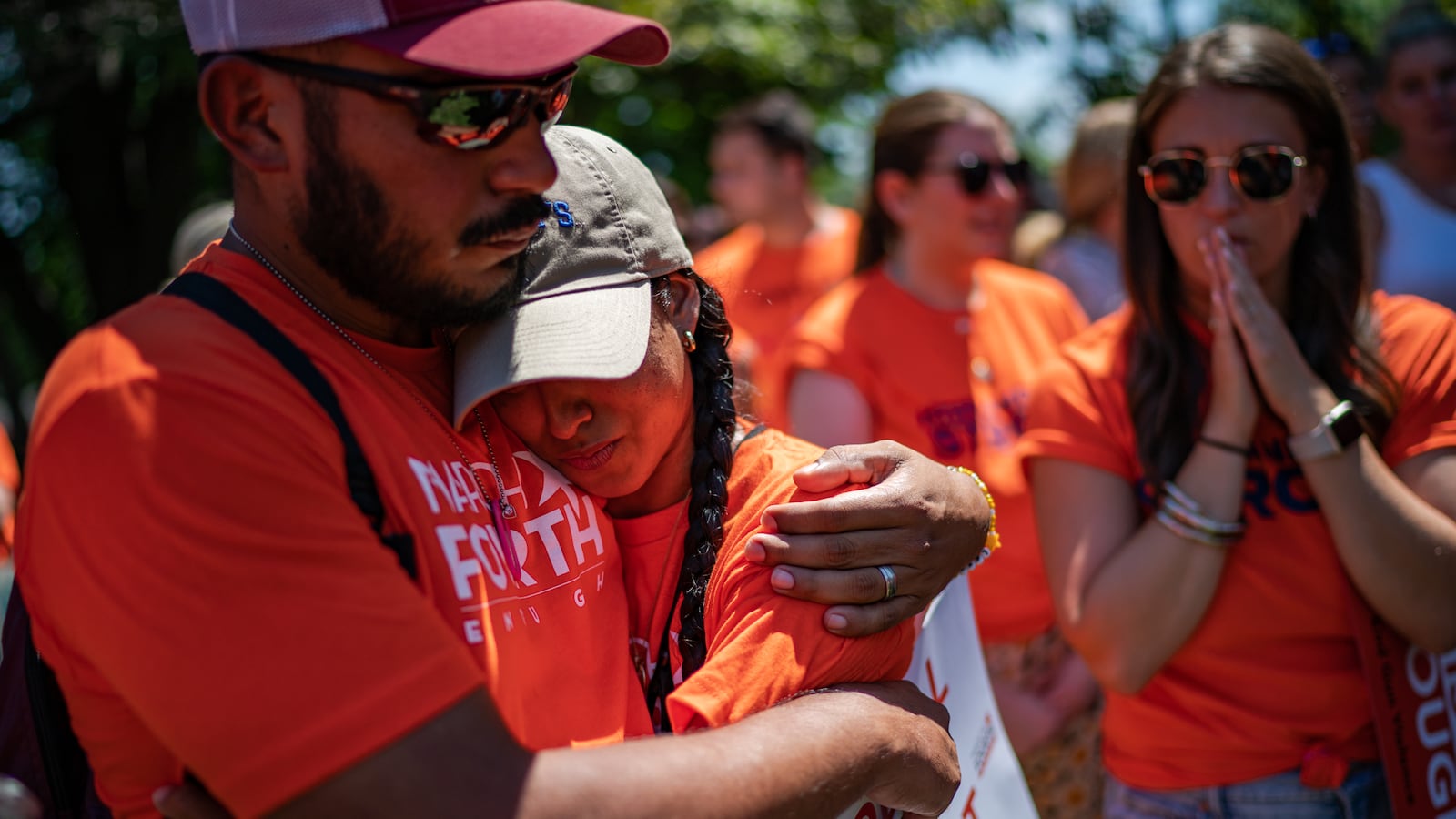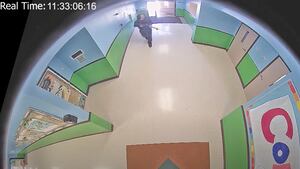A small army of 376 federal, state, and local law-enforcement officers disastrously botched their tactical response to the mass shooting at Robb Elementary School in Uvalde, a preliminary report by an investigative committee of the Texas House of Representatives revealed Sunday, painting a picture of dysfunction that went well beyond an embattled school police chief.
At a press conference several hours later, state Rep. Dustin Burrows (R), the committee’s chairman, emphasized the simple phrase that best encapsulated the report’s contents: “multiple systemic failures.”
The 77-page document—a page for each minute of the leaked video showcasing the massacre—was compiled in 44 days, the product of more than 35 interviews with witnesses, including school police officers, the district superintendent, the school’s principal, and others. Investigators also interviewed 39 more independent subjects, and reviewed crime scene photos, 911 calls, and both audio and video from the day, according to Burrows.
The result provides a fresh rundown of what happened inside the building, a profile of the gunman who got inside, and a beat-by-beat account of how mistakes or inaction by officers, the school, and the family of the shooter led to catastrophe.
“The Committee issues this interim report now, believing the victims, their families, and the entire Uvalde community have already waited too long for answers and transparency,” the report reads, according to a copy reviewed by The Daily Beast.
The document lays out how a bevy of police resources failed to prevent tragedy, even as individual school staffers tried to protect children. Not a single law enforcement officer was on the school’s campus when gunman Salvador Ramos attacked, according to the report. Instead, the school was alerted to his presence by coach Yvette Silva, who the report says “almost certainly saved lives.”
It also delves deep into the ways, as Burrows put it, “Robb Elementary was not adequately prepared for the risk of a school shooter.”
“The school’s 5-foot fence was inadequate,” he explained at the press conference. “Despite a policy of locked doors, there was a regrettable culture of non-compliance. In fact, all three exterior doors to the building were unlocked that day and multiple interior doors were not secured the day of the shooting.”
The state congressman said he believed lack of preparation was a wider issue affecting other schools around Texas and the country at large. He later refused to answer a question from a reporter about supporting laws to curb the root issue of access to firearms.
“After a modicum of time, out of respect for this report, all of us, I assume, will have the opportunity to make the comments about the policy that changes our feelings and what we think ought to be done,” Burrows snapped. “But today is not that day.”
The document lays into how Ramos went from an 18-year-old plagued by mental health issues to a mass murderer, without ever naming him or showing his face. “He wanted that,” Burrows explained, “and he did not deserve it.”
According to the report, the gunman grew up in an unstable household and family knew he was unwell, with a cousin indicating he expressed suicidal ideation shortly before the attack. An ex-girlfriend interviewed by the FBI said he appeared “lonely and depressed,” constantly teased as a “school shooter” months before the massacre.
Law enforcement was also made aware of Ramos by way of a blowout argument he had with his mother, which was live-streamed on Instagram. The spat led to sheriff’s deputies being called to the home, though the eventual recourse proved to be fatal: Ramos moved in with his grandparents, and no arrest was made. The report also confirms previous reporting from The Daily Beast that upon learning Ramos brought guns home prior to the attack, the family ordered them removed from the house.
A definitive account of how cops responded to the massacre has still not been written. Police and city officials initially tried to paint the responding officers as “heroes,” pointing to how officers managed to prevent hundreds of other student deaths. “There was zero hesitation on any of these officers’ part, they moved directly towards the gunfire,” they told state authorities, hoping they would help spin the narrative, according to The New York Times.
If it had not been already, that narrative was fully decimated last week when leaked surveillance footage showed dozens of officers—many heavily armed and sporting armor—hesitating to enter the classroom the gunman had barricaded himself in. Some even ran in the opposite direction. Eventually, as more gunshots rang out, officers brought in a barrier shield, but they ultimately kept a healthy distance from the fray for over an hour, the footage fueling the perception they protected themselves over kids.
But the footage also stoked the wounds of a grieving community, with some officials and survivors arguing about whether the Austin American-Statesman and local network KVUE should have leaked the video days before families were set to view it. Uvalde Mayor Don McLaughlin called the move “one of the most chicken things I’ve ever seen.”
The report confirms that a cop seen in the footage checking his phone, and pilloried online for it, was in fact Uvalde CSID Officer Ruben Ruiz, who was removed from scene after receiving a text from his wife, who had been shot in the classroom. She succumbed to her injuries.
The blame for the tactical response has at least until now largely fallen onto Uvalde School Police Chief Pete Arredondo, whose alleged failure to follow active-shooter protocols may have increased the death toll of the attack. Arredondo was placed on leave nearly a month after the shooting, and he has since resigned from a city council post he was elected to just before the massacre.
He was not spared criticism in the report, which took issue with his previous claim of not having realized he was in charge as incident commander on the scene that day. But the new document raised fresh questions about how so many heavily armed cops failed to halt a murderous rampage—and whether lives were lost as a result.
Assigning accountability for that, however, was not the investigative committee’s task. Instead, Burrows said, that would be a future task for the agencies named in the report, which would hopefully be aided by its conclusions.
“The report says if you’re not willing to put the lives of the people you serve, those children, before you, then you—in my view—should find another job,” Burrows said.
Rep. Joe Moody (D), another committee member, suggested during the conference that the report would be “call to action,” saying its findings showed “important similarities” with previous shootings in El Paso, Midland-Odessa, and Sutherland Springs.
“It’s hard to hear that there were multiple systemic failures, because we want to tell ourselves that systems work,” Moody said. “We want to tell ourselves there’s one person we can point our fingers at. We want to tell ourselves that this won’t happen again.”
“That’s just not true.”








